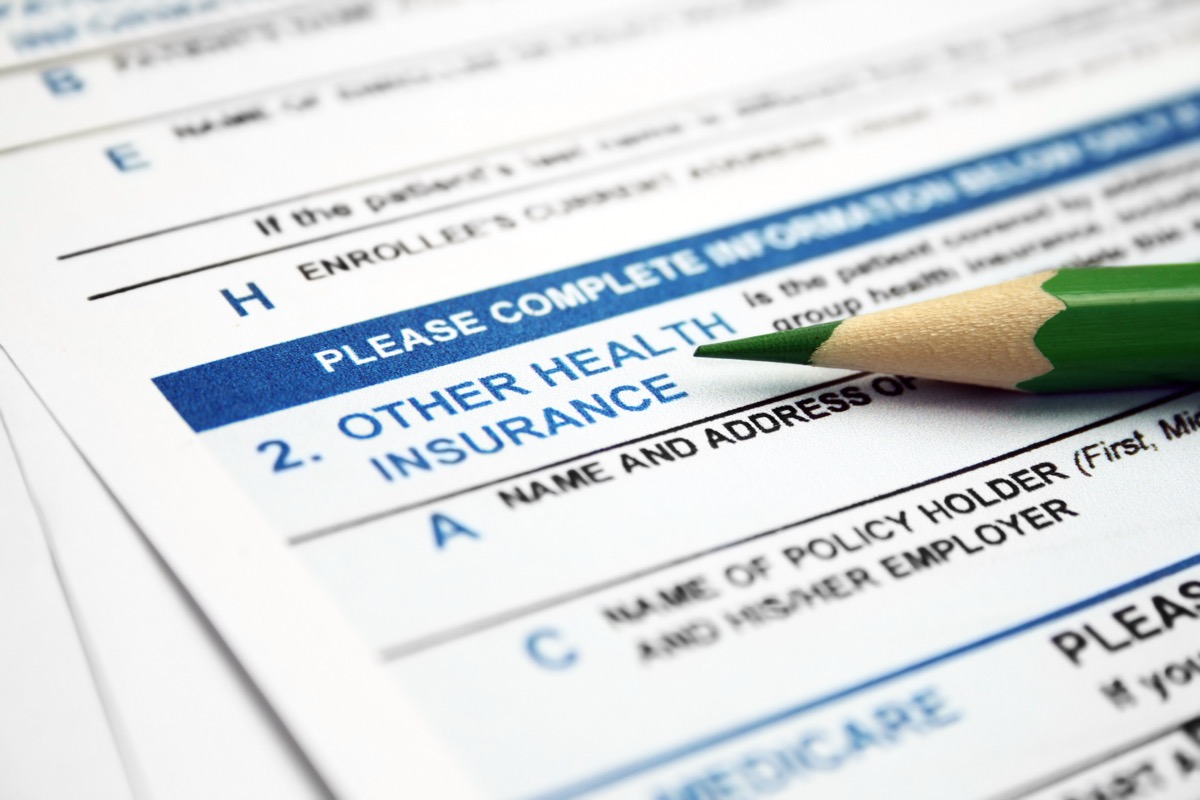HHS Provider Relief Fund Means A New Dental Distribution
Jul 20, 2020
On July 10, 2020, the U.S. Department of Health and Human Services (HHS) announced dental providers can apply for relief under the Provider Relief Fund. The deadline to apply has been extended to August 28, 2020.
Eligible dentists can receive a reimbursement of 2% of their annual reported patient revenue. Applications are made through the Enhanced Provider Relief Fund Payment Portal.
To be eligible to apply, a dental provider must meet all of the following requirements:
- Must not have received payment from the initial $50 billion Medicare-focused general distribution.
- Must not have received payment from the $15 billion Medicaid and Children’s Health Insurance Program distribution.
- Must have filed a federal income tax return for fiscal years 2017, 2018 or 2019 or be an entity exempt from the requirement to file a federal income tax return and have no beneficial owner that is required to file a federal income tax return (for example, a state-owned hospital or health care clinic).
- Must have provided patient dental care after Jan. 31.
- Must not have permanently ceased providing patient dental care directly or indirectly through included subsidiaries.
- If the applicant is an individual, have gross receipts or sales from providing patient dental care reported on Form 1040, Schedule C, Line 1, excluding income reported on a W-2 as a statutory employee.
Dentists who previously rejected and/or returned payments from the Medicare general distribution or the Medicaid and CHIP distribution are not eligible to apply now.
For HHS terms and conditions; For HHS Dental Distribution FAQs
Categories: COVID-19, Healthcare & Dentistry
Closing Costs: Selling A Practice to Supplement Retirement
Sep 28, 2016
Are you counting on your practice sale to fund your retirement?
 If so, you may need a backup plan. Typically, after taxes and closing expenses, the profit from selling your practice is roughly equivalent to what you would take home from the practice after working an additional 1.5 – 2 years. As a result, many dentists fail to plan their finances for retirement.If you are considering retirement in the next ten to fifteen years, now is the time to start planning.
If so, you may need a backup plan. Typically, after taxes and closing expenses, the profit from selling your practice is roughly equivalent to what you would take home from the practice after working an additional 1.5 – 2 years. As a result, many dentists fail to plan their finances for retirement.If you are considering retirement in the next ten to fifteen years, now is the time to start planning.
To start, ask yourself: How much will it cost to live once I retire? If you can’t answer that question, it is time to start calculating. Use your credit card statements and check register. You will need to include taxes, health insurance, medications, mortgage, travel, gas, insurance, repairs, maintenance, phone, clothes, gifts, entertainment, hobbies, food, utilities, and cable. Then, determine a monthly and annual cost of living.
Now is the time to get totally out of debt. Banks place liens on your practice when you borrow money or open a business line of credit. If you have borrowed money, the debt will have to be paid off before, or at the sale of your practice.
What investments and other assets do you own? Do you own stocks, bonds, fixed assets, cash, or money market accounts? How much income will these assets provide after retirement — and is it enough? Currently, social security is still viable, but will likely only fund a small portion of your retirement needs.
Determine whether your future total income from investments, social security, disability insurance, and any other sources will be enough to cover your future budget. If not, then you will either need to reduce your current and future standard of living, or lengthen your timeline for retirement.
The most common solution dentists see as the answer to retirement income is to sell their practice. If that’s your plan, you should probably be looking at other options to supplement your retirement.
If you haven’t started planning yet, now is the time.
- Jennifer Furey, CPA
Categories: Healthcare & Dentistry
Business Continuity Plan
Mar 17, 2016
What if disaster strikes your practice? An estimated 25% of businesses don’t reopen after a major disaster strikes.* Having a business continuity plan can help improve your odds of recovering.
The basic plan
The strategy behind a business continuity (or disaster recovery) plan is straightforward: Identify the various risks that could disrupt your practice and look at how each operation could be affected and identify appropriate recovery actions.
Make sure you have a list of employees ready with phone numbers, e-mail addresses and emergency family contacts for communication purposes. If any of your employees can work from home, include that information in your personnel list. You’ll need a similar list of customers, suppliers and other vendors. Social networking tools may be especially helpful for keeping in touch during and after a disaster.
Risk protection
Having the proper insurance is key to protecting your practice — at all times. In addition to property and casualty insurance, most small businesses carry disability, key-person life insurance and business interruption insurance. And make sure your buy-sell agreement is up to date, including the life insurance policies that fund it. Meet with your financial professional for a complete review.
Maintaining operations
If your building has to be evacuated, you’ll need an alternative site. Talk with other business owners in your vicinity about locating and equipping a facility that can be shared in case of an emergency. You may be able to limit physical damage by taking some preemptive steps (e.g., having a generator and a pump on hand).
Protecting data
A disaster could damage or destroy your computer equipment and wipe out your data, so take precautions. Invest in surge protectors and arrange for secure storage by transmitting data to a remote server or backing up daily to storage media that can be kept off site.
Protecting your business
If you think your practice is too small to need a plan or that it will take too long to create one, just think about how much you stand to lose by not having one. Meet with your financial professional for a full review.
- www.sba.gov/content/disaster-planning
Categories: Healthcare & Dentistry
What Is Reasonable Compensation?
Feb 12, 2016
As the owner of an incorporated business, you’re probably aware there is a tax advantage to taking money out of the corporation as compensation (salary and bonus) rather than as dividends. The reason is simple. A corporation can deduct the compensation it pays, but not dividend payments. Thus, if funds are withdrawn as dividends, they are taxed twice; once to the corporation and once to the recipient. Money paid out as compensation is taxed only once; to the employee in which it was received.
However, there is a limit on how much money you can take out of the corporation in this way. The law says compensation can be deducted only to the extent which is reasonable. Any unreasonable portion is nondeductible and, if paid to a shareholder, may be taxed as if it were a dividend. As a practical matter, the IRS rarely raises the issue of unreasonable compensation unless the payments are made to someone “related” to the corporation, such as a shareholder or a member of a shareholder’s family.
 How much compensation is “reasonable”? There is no simple formula. The IRS attempts to determine an amount similar companies would pay for comparable services under like circumstances. Factors taken into consideration include:
How much compensation is “reasonable”? There is no simple formula. The IRS attempts to determine an amount similar companies would pay for comparable services under like circumstances. Factors taken into consideration include:
- employee’s duties;
- amount of time required to perform those duties;
- employee’s abilities and accomplishments;
- complexity of the business
- gross and net income of the business;
- employee’s compensation history
There are a several steps you can take to make your compensation earned to be considered “reasonable”. For example, you can:
- Use the minutes of the corporation’s board of directors to document the reasons for the amount of compensation paid
- Keep compensation in line with what similar businesses are paying their executives
- Avoid paying compensation in direct proportion to the stock owned by the corporation’s shareholders. This is may be perceived as a disguised dividend, and will probably be treated as such by the IRS.
- If the business is profitable, be sure to pay at least some dividends. This avoids giving the impression that the corporation is trying to pay out all of its profits as compensation.
Planning ahead and properly documenting your reasons can avoid problems down the road.
Categories: Healthcare & Dentistry
The Affordable Care Act: Compliance for Employers
Jan 26, 2016
- 50-99 employees – Employers did not need to offer health care coverage until this year, 2016.
- More than 100 employees – Employers were only required to offer coverage to 70% of employees and their dependents) starting in 2015. Starting in 2016, employers have to offer coverage to 95% of their employees to avoid a penalty.
- The Internal Revenue Code §6056 requires an applicable large employer (ALE) (50 or more employees hired in any calendar year) to file and furnish information relating to the health insurance that it offers (or does not offer) to its full-time employees and their dependents. This information is provided to assist the IRS with administering the ACA Employer Mandate (generally requires ALEs to offer coverage to their full-time employees and their dependents or be subject to a potential penalty). This information also assists the IRS with administering the premium tax credit provided to individuals who enroll in coverage through the Marketplace (Exchange).
 These notifications are reported on forms 1095-B and 1095-C. A form 1094 is the transmittal form for each of these notifications. Form 1095-B is for small or large employers that offer a self-funded plan (and for insurance companies). Form 1095-C is for Applicable Large Employers ALEs (50 or more employees) to report their health care plan that meets minimum value and affordability standards or face a penalty for each employee receiving subsidized coverage through the Marketplace (Exchange).
These notifications are reported on forms 1095-B and 1095-C. A form 1094 is the transmittal form for each of these notifications. Form 1095-B is for small or large employers that offer a self-funded plan (and for insurance companies). Form 1095-C is for Applicable Large Employers ALEs (50 or more employees) to report their health care plan that meets minimum value and affordability standards or face a penalty for each employee receiving subsidized coverage through the Marketplace (Exchange).
Fortunately, the IRS issued extensions to employers who must file either form 1095-B or 1095-C. The deadline to submit to the IRS and distribute these forms to covered individuals was extended until March 31, 2016. The deadline for this form is May 31, 2016 (if filing in paper) or June 30, 2016 if filing electronically. An extension is automatically granted for 30 days if the employer files an extension with the IRS before the deadline, either in paper or electronically.
If you required additional information or have questions about how the ACA may affect your business, please give your William Vaughan Company representative a call.
Categories: Healthcare & Dentistry
